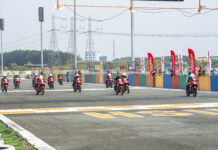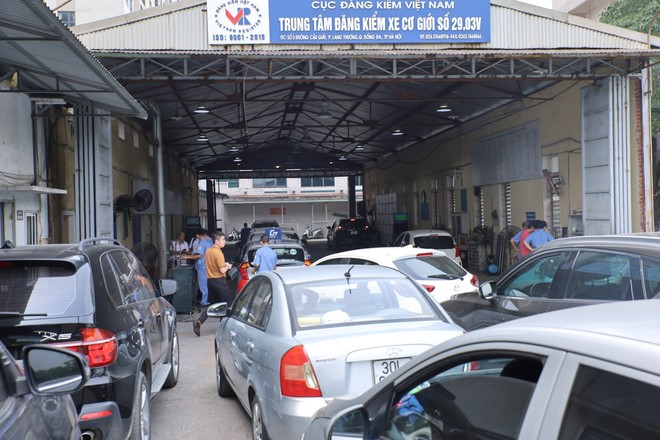Hanoi Construction Department has issued a recommendation to implement regulations for vehicle inspection.
The document, sent to relevant units, states that, in practice, the number of vehicles undergoing inspection at Hanoi-based inspection centers has increased significantly, with long queues forming at times.
This situation arose due to two main reasons. Firstly, some vehicle owners who violated road traffic safety and order did not go to the competent authorities to resolve the issue as regulated. Secondly, some owners failed to proactively maintain and repair their vehicles before taking them for inspection, resulting in additional defects that required multiple trips to the inspection centers.
To address these issues and ensure comprehensive solutions to enhance the quality of vehicle inspection services in Hanoi, the Hanoi Construction Department requests organizations, individuals, and vehicle transport businesses to proactively check for traffic violations using the VNeTraffic application of the Ministry of Public Security or the TTDK – Vehicle Inspection Appointment System.
The Department recommends that vehicle owners proactively inspect and schedule “vehicle check-ups” to avoid long waits.
Vehicle owners are advised to proactively maintain, repair, and address any defects in their vehicles before taking them for inspection.
They should also be flexible in scheduling appointments through the vehicle inspection appointment software of the Vietnam Register and direct registration methods to reduce congestion and save time during inspections.
The Hanoi Construction Department has also instructed vehicle inspection centers to enhance occupational ethics and communication skills training for their leaders and staff. Inspection centers must ensure that inspectors and staff do not impose any unreasonable requirements regarding the inspection process and procedures.
Additionally, inspection centers should anticipate personnel needs and propose timely training and certification for reserve inspectors and staff to ensure stable operations. They should also collaborate with relevant authorities to organize traffic flow and arrange logical entry and exit routes for vehicles during inspections, ensuring safety for people and vehicles.
The Construction Department’s Inspectorate is tasked with strengthening the inspection and handling of any violations in vehicle inspection activities, in coordination with functional forces to organize traffic flow and provide guidance at inspection centers during vehicle congestion.
Ngân Tuyền (ANTĐ)
The Quiet Crackdown: Unveiling Hanoi’s March Auto Fines
The traffic surveillance camera system in Hanoi detected and recorded 571 cars violating traffic laws in March alone. This innovative system, a testament to the city’s commitment to road safety, has proven to be an invaluable tool in deterring and penalizing traffic violations. With its advanced technology and comprehensive coverage, Hanoi’s traffic surveillance network is a formidable force in the city’s ongoing quest to enhance road security and promote responsible driving.
How Long Does It Take to Get a Result for a Traffic Violation Committed During the Lunar New Year Holidays?
There is an array of applications and websites that support checking traffic violation information after 10 days of the incident. These platforms provide a valuable service to drivers, offering a convenient way to stay informed about any penalties incurred. With easy access to this information, drivers can take proactive steps to address any issues and ensure they remain compliant with road regulations.














































